New York From 1,200 Feet
Paintings of New York from the perspective of a plane flying at 1,200 feet, along the Hudson River.
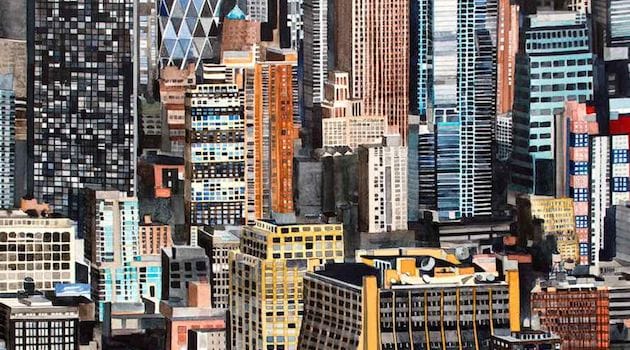
Interview by Rosecrans Baldwin
The Morning News: This series began with a flight in a family plane down the Hudson. Do you fly? How does New York change in the air?
Amy Park: The paintings in the show were inspired by photos I took while my partner flew us and our son, who was 18 months old at the time, down the Hudson River. I don’t fly at all and have no interest in learning. New York for me is always amazing, but being so close and at 1,200 feet, in the middle of the vertical skyline, is an experience that I wanted to share. I understood the grid of the city so much better after I saw it from the Hudson River. Continue reading ↓
Amy Park, 1200' is on view at Morgan Lehman Gallery, New York, through July 3, 2014. All images used with permission, all rights reserved, copyright © the artist.
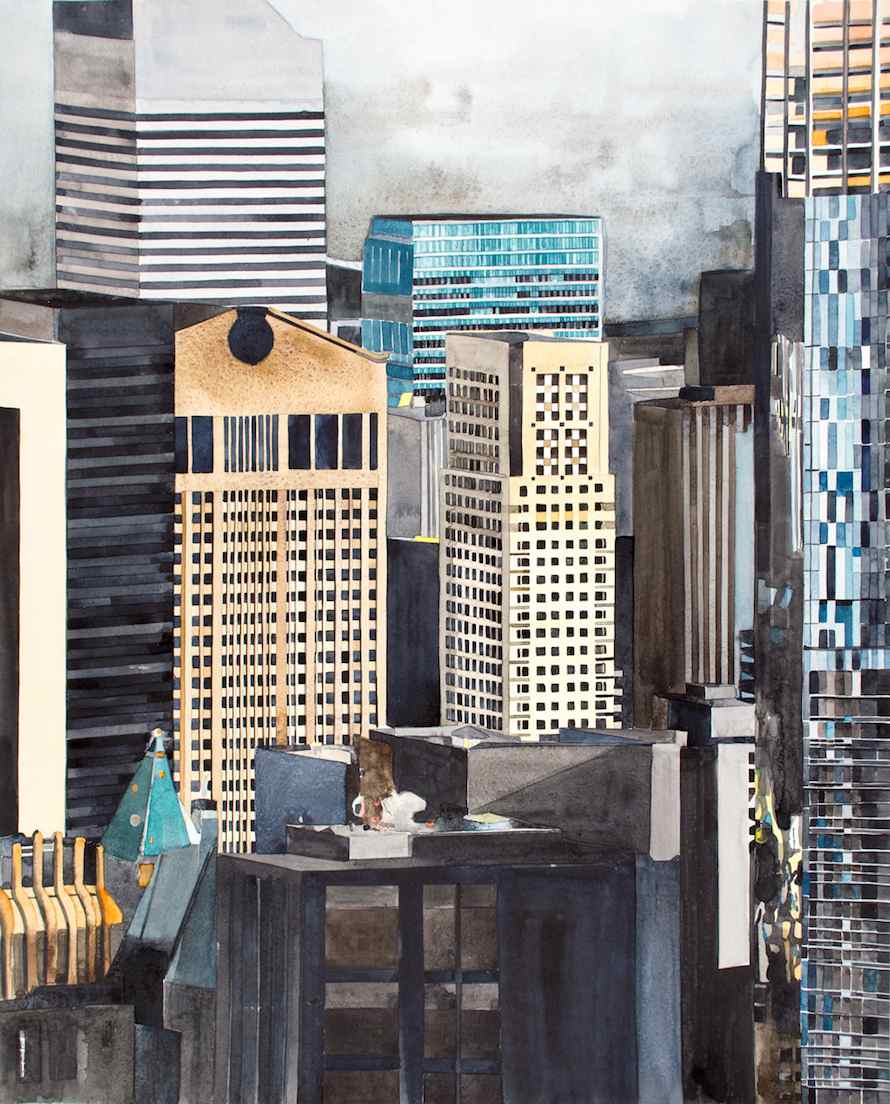
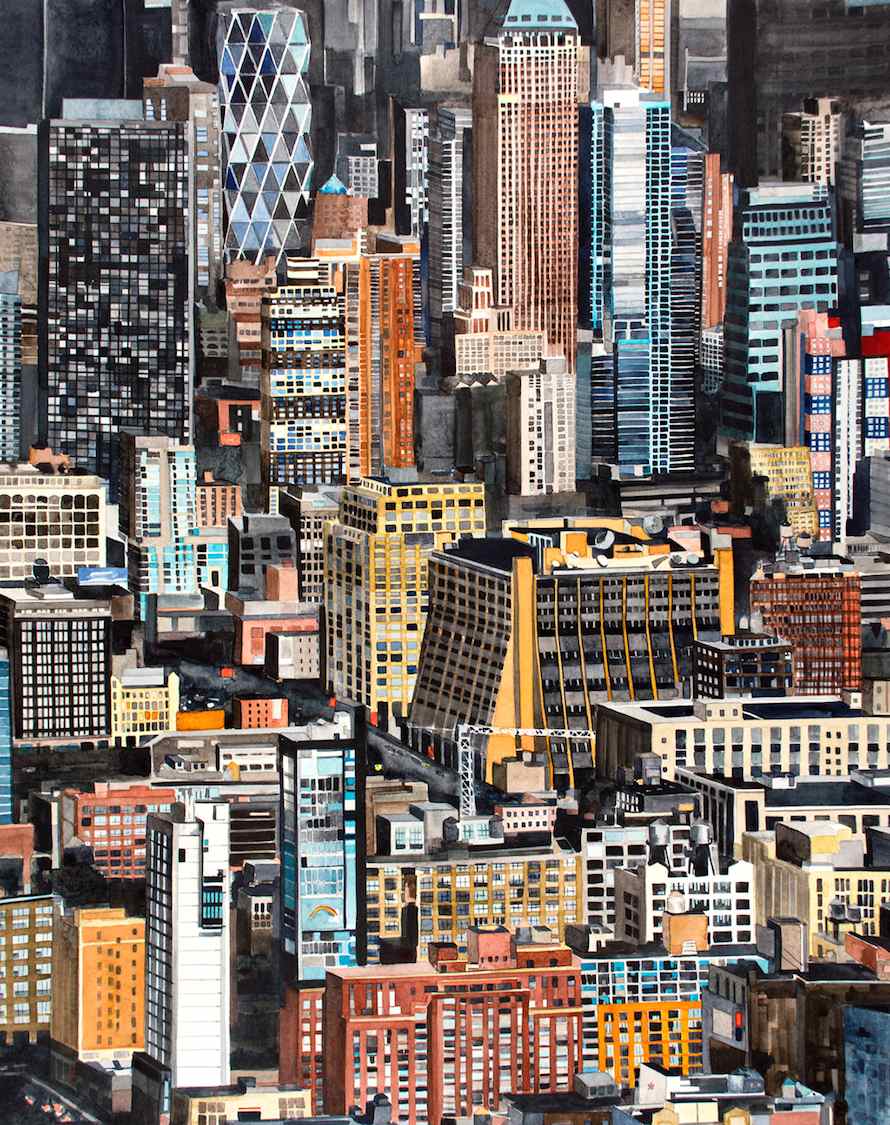
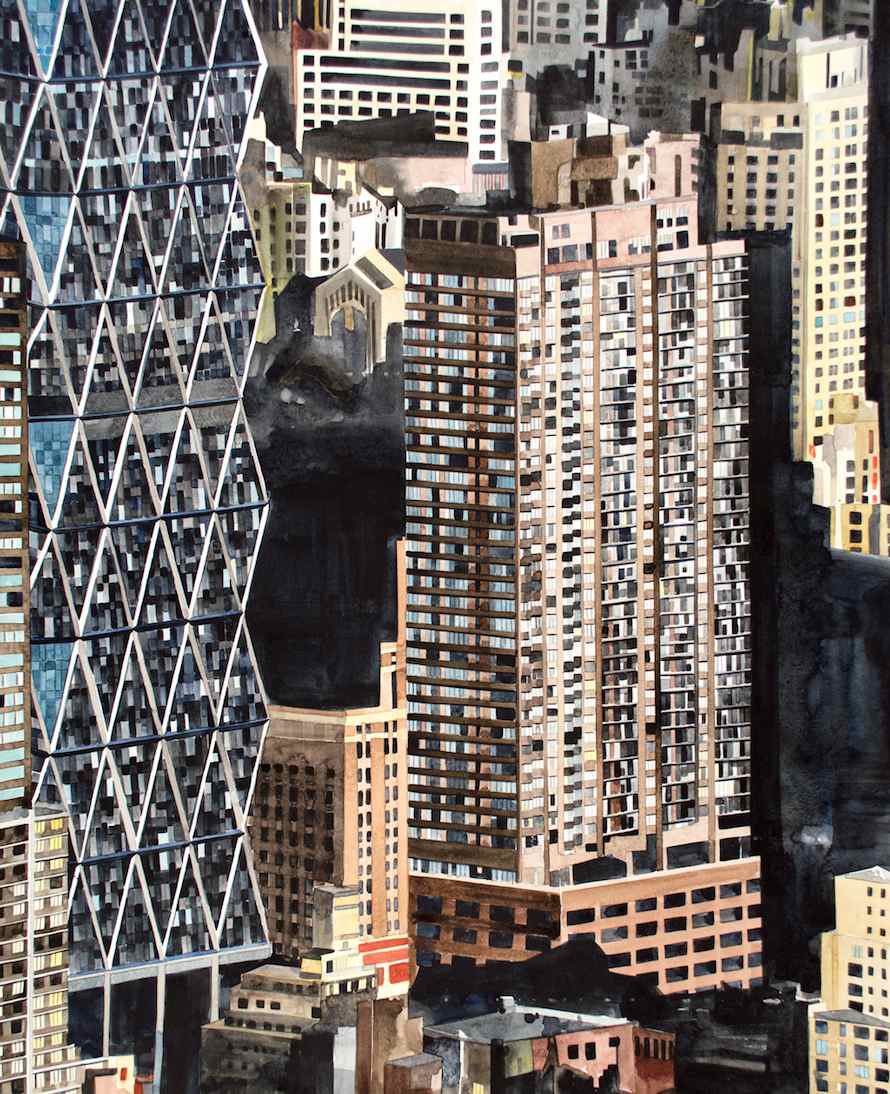

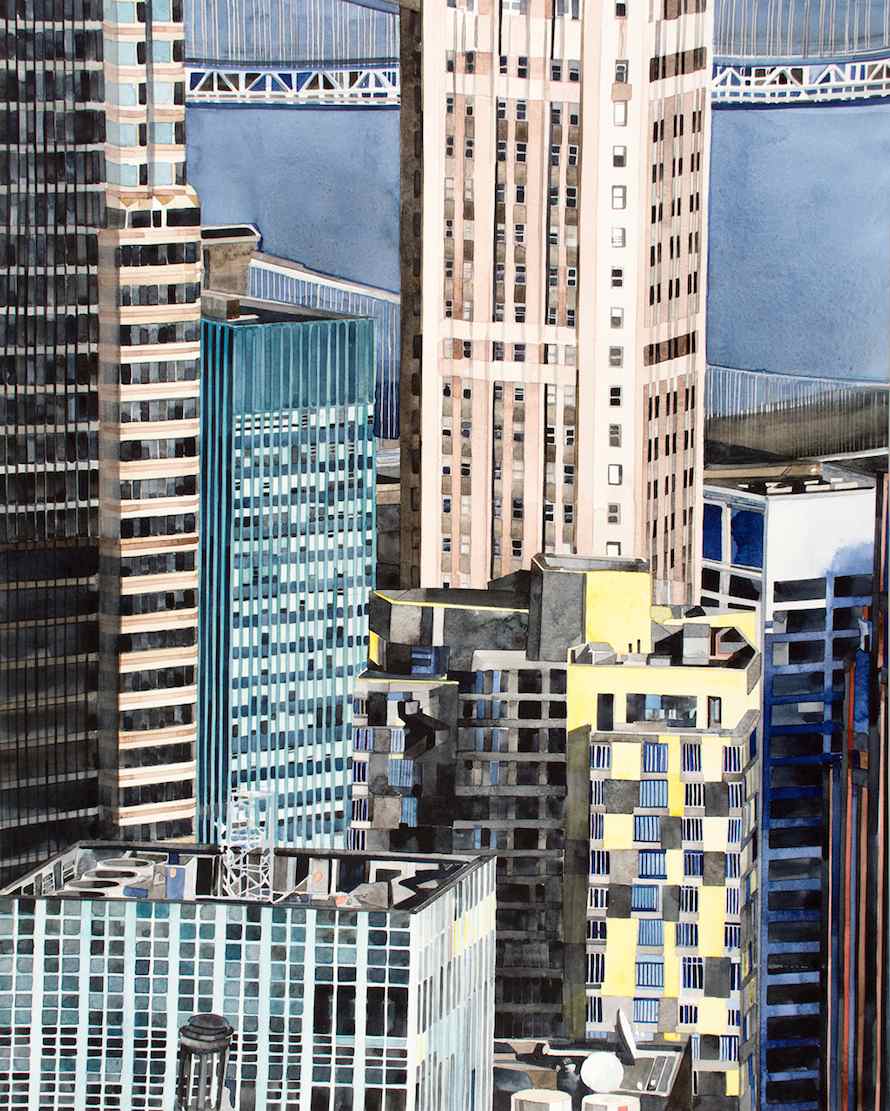
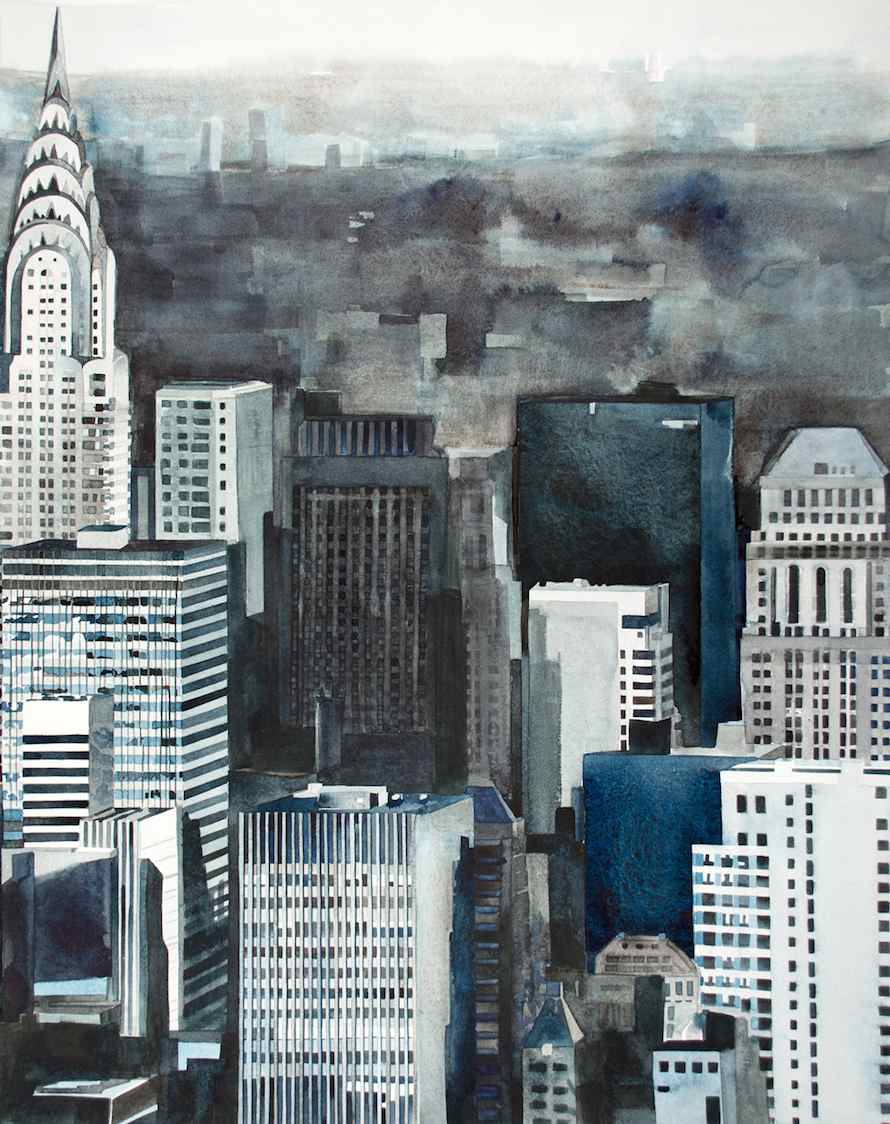
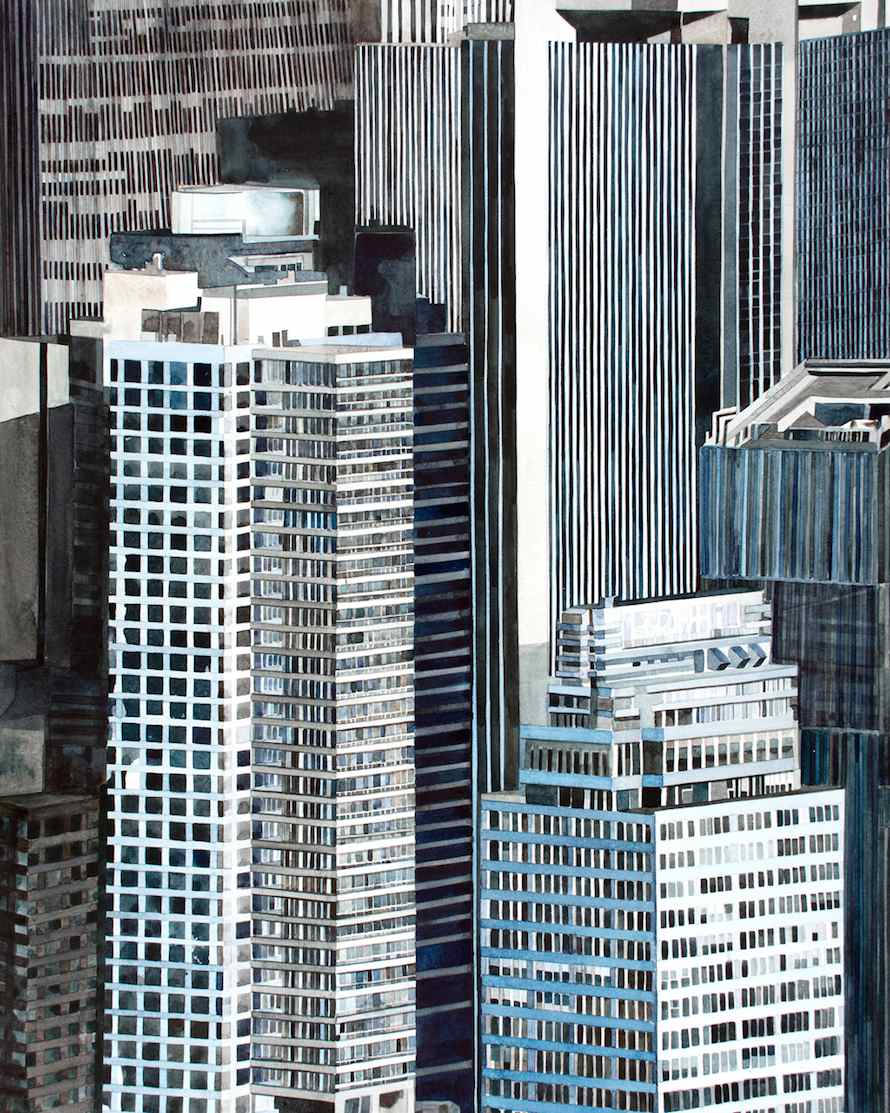
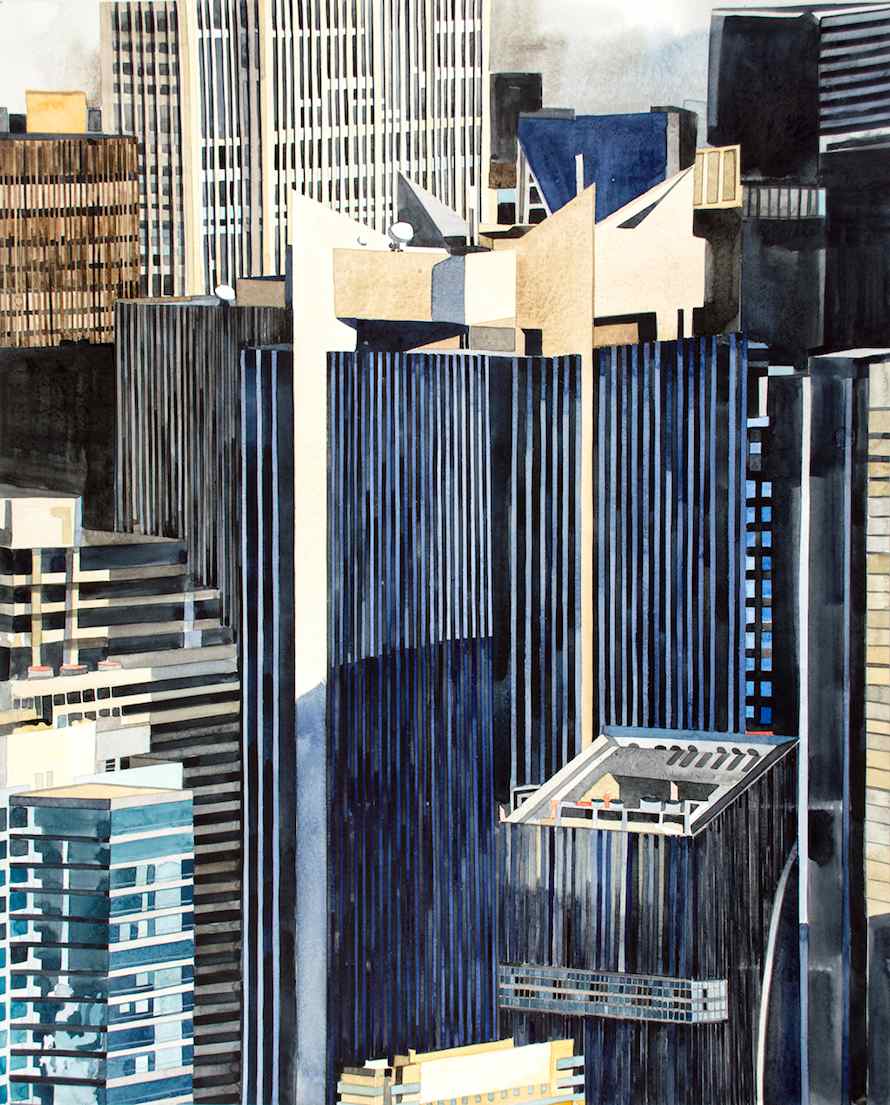
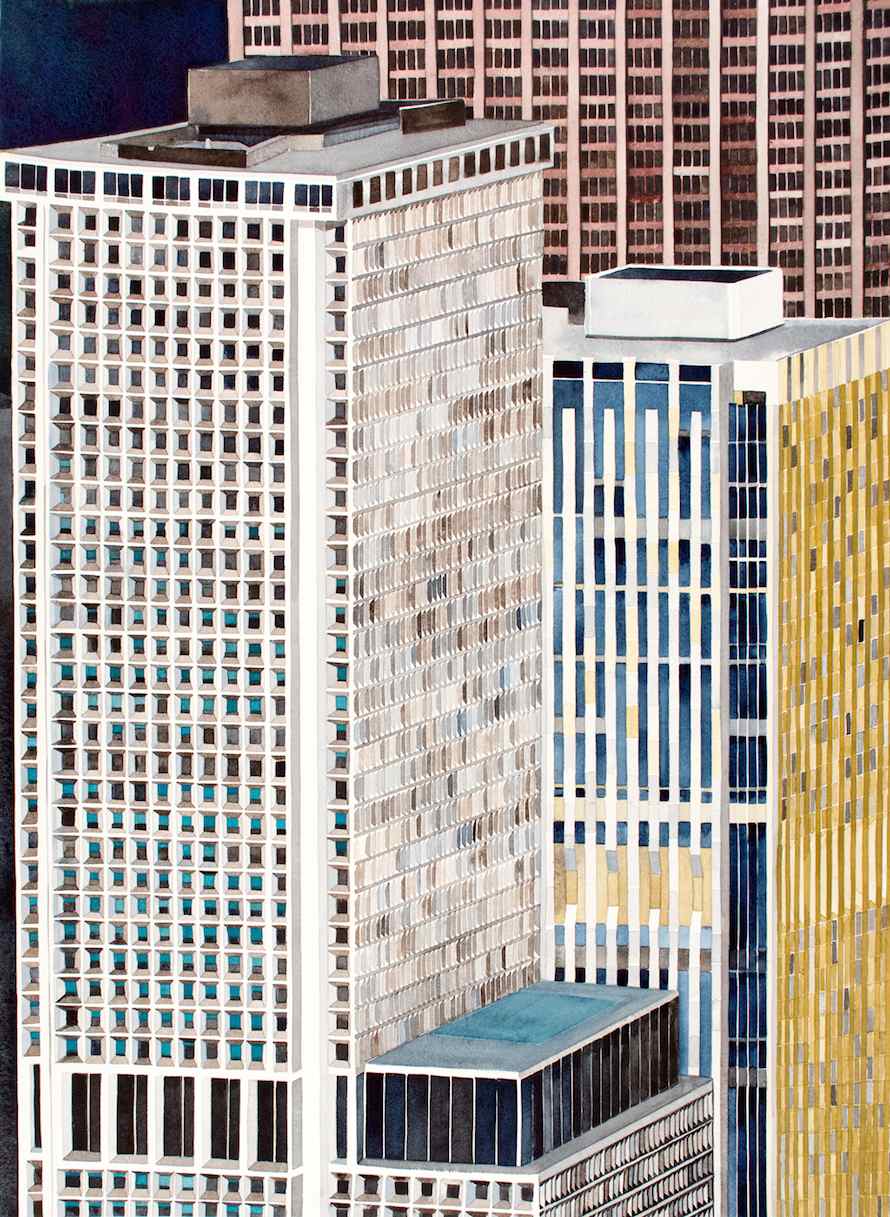
Interview continued
TMN: Even at their most dense, your paintings are full of movement. Is that how you see NYC architecture?
AP: The movement was a big part of being in the plane. We were moving fast, but strangely also slow, and I was able to take photos from so many different angles and positions. Generally I believe it’s the way we as urbanites move through the architecture that gives all of it a sense of movement.
TMN: What’s the most disappointing aspect of painting New York City?
AP: It’s not Chicago. I began painting architecture while I was living in Chicago after graduate school. The city is one of my favorites and there are brilliant examples of architecture everywhere, and there is a little bit of space around them. New York’s architecture is interesting and is getting better with additions from Norman Foster and Frank Gehry. It just does not have the historical roots that Chicago does.
TMN: Well, as someone from Chicago, I find its architecture cold, the city much more difficult to navigate on foot, compared to New York.
AP: Chicago and New York are different cities for sure, both with good and not-so-good aspects. For me, being from Wisconsin, Chicago was always “the big city.” It’s where I decided that I needed to live in an urban environment, and I will always be grateful to Chicago for that. I do love New York as well, and I’ve chosen to live here. The city is tougher and requires effort that Chicago doesn’t. For me, New York is a city that attracts amazingly creative, driven people, and it is full of that type of energy. The urban environment and the people who live here help me to be the best version of myself that I can be.
TMN: What do you admire in a good architect?
AP: I love architects who inspire and challenge the public. Mies van der Rohe, who contributed so much to Chicago, is my favorite.
TMN: Why van der Rohe? What specific buildings?
AP: For me, visually, his work is perfection in line and form. My first favorite building was the Farnsworth House in Plano, Ill., just outside of Chicago. I truly fell in love with it when I visited it in person. I have my first large watercolor painting of it in my kitchen now. I see it every day. I also love van der Rohe’s Seagram Building here on Park Avenue. It is the opposite of the single-story Farnsworth House. It’s golden black and soars into the sky. Recently, I read Phyllis Lambert’s book Building Seagram, and I learned so much about the interesting history of the building and her role in it. She was 27 years old when she began the search for the architect of her father’s building. Thanks to her belief in Mies van der Rohe and her love of the International style, we have one of his buildings in NYC. And yes, I am going to work on some paintings of it!
TMN: When did you sell your first piece of art? What was the experience like?
AP: I sold my first painting to a friend as an undergrad. It was a very small, five-by-seven-inch watercolor of a chair, for $25. Last week I sold my first five-by-16-foot piece for a little more than $25! It feels great—a validating experience to know someone likes your work enough to spend money on it.
TMN: You’ve worked at street level, at high altitude. Are there more levels to be explored?
AP: I am sticking with 1,200 feet for now. I have thousands of photos to be used. I might spend my entire career on it, or at least a few more years.
TMN: When are you at your lowest, emotionally, as an artist?
AP: I actually am a fairly even person, emotionally. Painting complex compositions in watercolor helps me maintain that balance.
